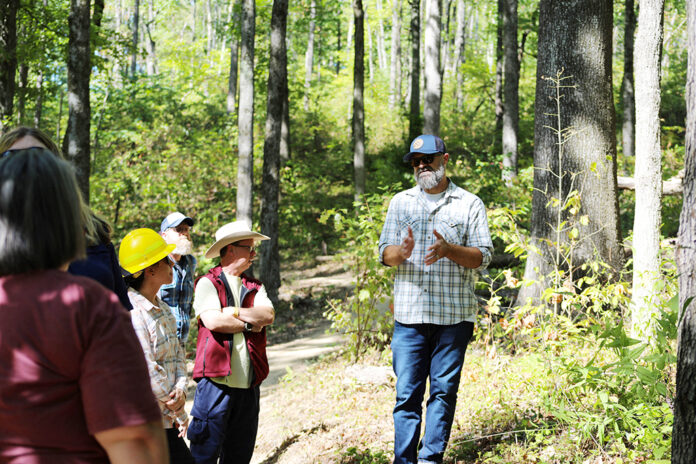
NELSONVILLE, Ohio — The Wayne National Forest hosted representatives from the Osage, Shawnee and Miami nations and U.S. Department of Agriculture Forest Service Eastern Region Heritage Program leadership as part of a Tribal Homelands Working Group visit Sept.10-12 at its Athens Ranger District near Nelsonville.
Attendees visited significant heritage sites and project areas. They discussed the Tribal nations’ and forests’ experiences working under legal framework like the Native American Graves Protection and Repatriation Act, which dictates that federal agencies return cultural items to their descendants and the Archaeological Resources Protection Act, which requires the federal government to consult tribes before permitting archaeological excavations on Tribal lands.
The group aims to strengthen discussions between Tribal nations and the national forests in the USDA Forest Service Eastern Region, as well as increase visibility about tribes’ ancestral knowledge. The Wayne National Forest regularly consults with Tribal members about areas of shared interest, such as archaeological resources protection.
The Shawnee and Miami nations controlled what is now southern Ohio until the 1795 Treaty of Greenville ceded indigenous lands to the United States. The Osage Nation was not a treaty signatory, but still holds ancestral ties to the land. In total, over 45 federally recognized Tribes call modern day Ohio their ancestral home.
In May, the forest Service announced a $3.9 million investment to restore Tribal, state and private forestlands.
As independent nations, Tribes have a government-to-government relationship with the United States that elevates their significance above common state-to-federal relationships. Their authority extends to the lands on which the Tribes are located, rather than state governments, and a trust relationship means the United States has a legal duty to protect the Tribes through legislative and executive powers
For more information, visit Wayne National Forest – Tribal Relations at usda.gov.









